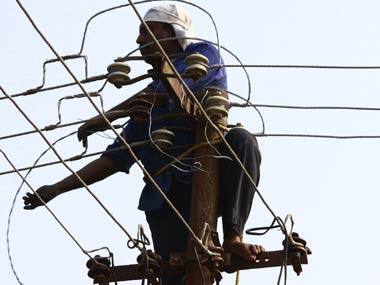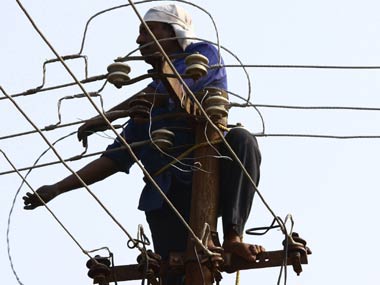Forced into a corner, state electricity boards (SEBs) have started increasing tariffs. On Wednesday (7 September) , the Gujarat Electricity Regulatory Commission (GERC) decided to increase power tariffs for consumers in the state capital by an average of 22 paise per unit - or 4.68 percent over the existing rate.
Last week, the Delhi government increased tariffs by 22 percent, followed by Punjab’s state electricity regulator which proposed a rise of 7-12 percent. According to UBS Securities, Rajasthan and Tamil Nadu are also planning increases in the range of 12-14 percent.
[caption id=“attachment_78353” align=“alignleft” width=“380” caption=“Gujarat Electricity Regulatory Commission decided to increase power tariffs for consumers in the state capital by an average of 22 paise per unit. Reuters”]
 [/caption]
[/caption]
According to the finance ministry, if tariffs are not increased, the cumulative losses of the SEBs would rise to Rs 1,16,089 crore by 2014-15. The losses of SEBs have been mounting on account of the higher costs of power purchased from the grid. Nearly 62 percent of SEB costs relate to payments for power purchases. Higher employee costs due to the implementation of the Sixth Pay Commission have added to the woes of the boards.
Though the Delhi High Court has held in its 23 May 2011 judgement that governments have no role to play in tariff determination (the Electricity Supply Act gives this role to the regulatory commissions), most state governments to pressure power suppliers on this score. While aggregate costs of power supply have gone up by 16.5 since 2007, tariffs have increased by only 6.5 percent.
Impact Shorts
More ShortsWith the Planning Commission and the Power Ministry making it clear to state governments that they cannot expect any help from the central government, state governments are left with little option but to increase tariffs.
Around 16 of the 28 states in the country have either raised tariffs or have proposed to do so over the next six months. They account for nearly 80 percent of power consumers.
The shares of power distribution companies have corrected to levels where their valuations are compelling. Reliance Infra and Tata Power are both trading at single digit price to earnings ratio (P/E).
The tariff hikes can help SEBs cut down their losses and focus more on rectifying their distribution system, which in turn can be helpful for capital goods companies involved in power distribution.
The tariff hike has the potential of reviving the sector in the short run, but in the long term the sector’s potential will depend on fuel supply issues. Coal supply to thermal plants is simply not enough, and imports are nearly twice as costly.
)